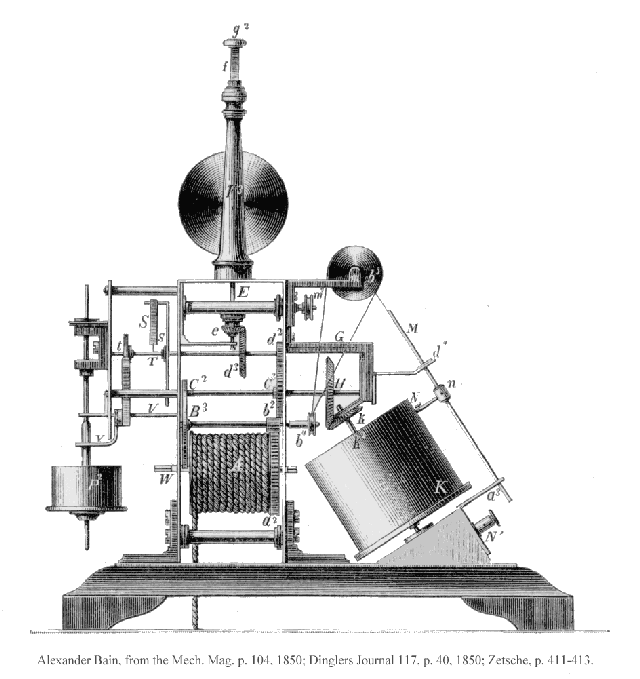Old Tech That Has Stuck Around For A Weirdly Long Time
- Anthony
- October 3, 2019
- 03:52 PM
- No Comments
Chances are you're still using one of these.
Most of the time, when a new technology comes out, it replaces whatever preceded it in a reasonable amount of time. CDs, for example, superseded floppy disks as a storage medium. And while there was a period in which people continued to find uses for those old floppies, the crossover wasn't overly long. CDs became the norm, then DVDs, then flash drives and then the cloud.
But some technologies just refuse to go away completely. Despite newer, better alernatives, they cling on for years. Here are just six of these hardy survivors.
Beepers/Pagers
Recently, Japan’s last remaining pager service, Tokyo Telemessage, decided it was time to shut up shop. According to the BBC, it had fewer than 1,500 subscribers left. But the fact this technology survived for so long at all is somewhat bizarre. Even stranger is that there are still hundreds of thousands of pagers being used in the UK, with around 130,000 within the NHS.
First developed in the 1950 and 1960s, pagers (also known as beepers) were particularly popular in the 1980s. Then mobile phones came along, and as they became more prevalent, the demand for beepers fell dramatically.
Because they tend to get a good signal in hospitals, pagers have clung on for much longer than you might expect. However, they’re living on borrowed time: by 2021, the NHS is planning to have phased them out completely.
Fax Machines
Despite email and instant messaging making it trivially easy to send photographs and scanned copies of documents, fax machines live on in offices across the country – some of them dedicated machines, others printers with built-in fax functionality.
These machines are, of course, throwbacks from the 1980s, when they were the best way of getting copies of documents from one place to another. But, oddly enough, fax machines are much, much older than that: the first fax machines were designed and patented in 1842 by Scottish inventor Alexander Bain.
^ One of Alexander Bain's facsimile machines.
Of course, if it’s not broken, why fix it? Indeed, fax machines still do a decent job of what they’re meant to do. There are also some potential security advantages to using fax, but it should be noted that they’re not immune to cyber attacks. In fact, if they're networked, they can be used to spread malware.
For some businesses, fax is still important, but if you never use it, it might be worth ditching your machine. For occasional use, you could try a cloud fax service.
WEP
Wired Equivalent Privacy (WEP) is a security algorithm for wireless networks that was first introduced in 1997. More than 20 years later, it is still supported by the majority of Wi-Fi-capable devices, including routers, access points, mobile phones, laptops and network adaptors.
But WEP was superseded long ago by WPA (Wi-Fi Protected Access), which first came out in 2003 and which has since seen several improvements. What’s more, WEP is considered to be a pretty weak form of security, which can easily be cracked.
So why does it persist? For legacy purposes: in other words, because some people are still using old devices and network equipment that only support WEP. Still, it’s pretty weird that brand new smartphones support WEP when only about 5% of wireless networks use it.
VGA
Video Graphics Array (VGA) is a display connection standard, used for hooking up computers and graphics cards to monitors, projectors and other equipment. Look on the back of your computer or your monitor, and you might find a VGA port. It will have 15 holes (5x3), and it will probably be blue.

^ A VGA cable. They have a habit of disappearing when you need them.
Although this analogue video technology was first introduced in 1987, it’s often still used today. DVI (Digital Visual Interface) has been around since 1999, and more recently HDMI (High-Definition Multimedia Interface) and DisplayPort have become popular standards as well, but VGA just keeps on going.
Why? Because in addition to being cheap to implement, it still works well, and there are enough legacy devices around to make it worth clinging on to.
Windows XP
We get it: Windows XP was awesome. But if you’re among the 1.44% of global users still using it, it really is time to move on. It’s been 18 years since it was first released, and five years since Microsoft pulled the last of its support for the aging operating system.
The good news is Windows XP use has been dropping in recent years. But when you can get Windows 10 cheaply or even for free, there seems little reason for anyone at all to continue using it.
FM Radio
The first FM radio was patented by Edwin H Armstrong in 1933. Over 80 years later, FM radio is still in use, despite being earmarked for a switch-off in the UK, which was supposed to start in 2015. The idea was that DAB (Digital Audio Broadcasting) would take over, but by 2013, the government was already backing away from the idea. By 2015, the new suggested target for the great FM switch-off was 2020.
Today, FM remains in use, but the government is now reviewing its place, with a conclusion expected next year.
We're guessing FM signals will be turned off eventually, but no one seems to know when that will actually happen.
Still using ancient hardware? TMB can help your business to modernise, with high-quality IT solutions from top vendors, like Microsoft, HP and SonicWall. Contact us to find out more.

